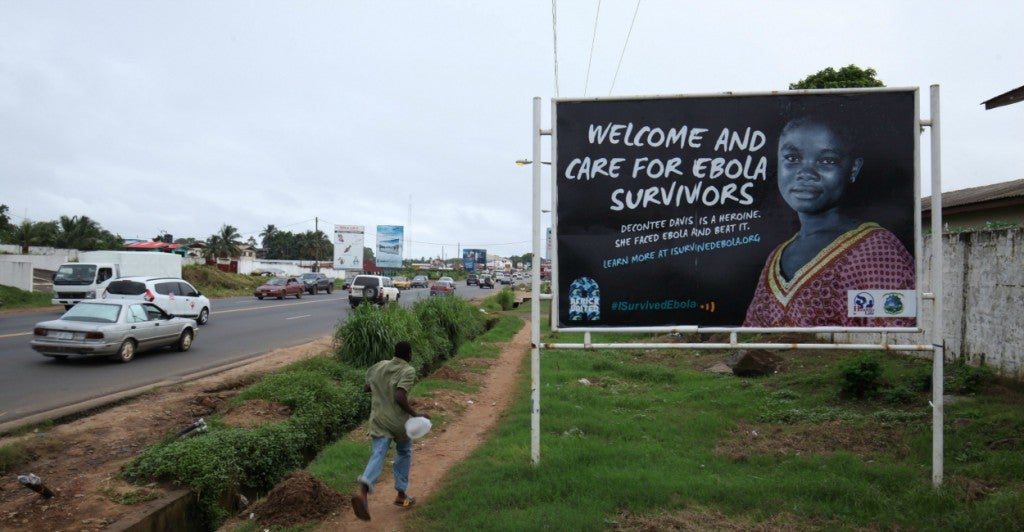In 2014, the Ebola outbreak in West Africa captured headlines around the world. As the epidemic has waned since then so too has the world’s attention.
Yet recent developments highlight that the fight is not yet over, and remind us that the international community needs to maintain its vigilance or risk the disease becoming endemic in West Africa and a permanent threat to spread beyond the region.
According to the World Health Organization (WHO), in the last 10 weeks the number of new cases has dropped to as low as nine and spiked to as high as 35. These rates are far below what they were during the height of the outbreak, but the epidemic’s tenacity is evidence that more needs to be done to fully eradicate it.
At the end of June there was particularly bad news: Liberia, one of the three countries hit hardest by the disease, announced an Ebola death near the capital Monrovia, nearly two months after the WHO had declared the country Ebola free. Since then, two more Liberian cases have been confirmed, and a third is probable. This is in addition to the virus in other countries returning to areas where it was previously eradicated, such as the Sierra Leonean capital of Freetown and parts of Guinea.
A large part of the problem is insufficient tracing and monitoring of Ebola victims and their contacts—an already-difficult task made even harder by the remoteness of parts of the affected countries and their poor infrastructure—and, in Sierra Leone, of patients and families violating quarantine measures. The situation is serious enough that last month President Ernest Bai Koroma of Sierra Leone ordered a military-enforced curfew of entire districts that have suffered new cases.
Ebola’s persistence is worrying, and so too is the lack of long-term planning to fight the disease when it inevitably recurs, as it has periodically since it was first diagnosed in 1976. Early last month, the G7 leaders discussed increasing support to nations affected by Ebola, but the proposal lacked specifics for tackling the virus.
So too did those arising from a WHO meeting shortly after, prompting Joanne Liu, international president of the French medical charity Médecins San Frontieres, to express her exasperation: “The reality today is if Ebola were to hit on [the] scale it did in August and September, we would hardly do much better than we did the last time around.”
Given how difficult it has been to eliminate the virus and the continued absence of long-term preparations for another outbreak, The Heritage Foundation special report, “The Ebola Outbreak of 2013-2014: An Assessment of U.S. Actions,” remains timely.
The report analyzed the international and domestic Ebola responses and identified their shortfalls, but also highlighted those that were effective.
It offered as well recommendations that included improving the strength and resiliency of West African medical systems, and ideas for doing so; streamlining the WHO’s core responsibilities in the region; identifying a lead coordinating agency at the onset of an epidemic; and engaging the private sector to help buttress countries’ weak health infrastructure.
The last several months should remind the international community that it is too early to lose focus on the Ebola threat in West Africa, and that it is already behind in preparing for the next outbreak. Diseases can travel rapidly throughout today’s interconnected world, and even a relatively few cases of new infections in Guinea, Sierra Leone and Liberia are too many. A final push is necessary to protect the affected countries, the region and beyond.
